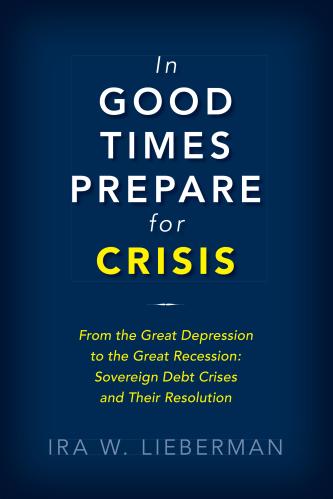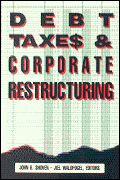Studies in this week’s Hutchins Roundup find under some circumstances rising electric vehicle usage could increase coal-fueled electricity generation, the level of non-financial corporate debt does not reliably predict recessions, and more.
Want to receive the Hutchins Roundup as an email? Sign up here to get it in your inbox every Thursday.
Electric vehicles could increase demand for coal
Promoting the use of electric vehicles and carbon pricing are both policies aimed at curbing greenhouse gas emissions—but under some circumstances may actually increase coal-fueled generation of electricity, find Kenneth Gillingham and Stephanie M. Weber of Yale and Marten Ovaere of Ghent University. To meet demand for electricity, suppliers first turn to the most efficient sources—renewables and high efficiency natural gas—then to coal, and finally to the most expensive option, natural gas peaking plants. When carbon is taxed at the moderate levels seen in pricing policies like those in cap-and-trade systems in California and the Northeast and those implicit in the Obama Administration’s Clean Power Plan, suppliers are likely to turn to coal instead of natural gas to meet additional demand for electricity. A higher carbon price (which would discourage use of coal altogether) or no carbon price (which would prompt generators to turn to coal long before an e-vehicle-related surge in demand) would allow promotion of electric vehicles to be much more effective at reducing emissions than the carbon prices observed in the recent past in the United States, they say. “Our findings reinforce the simple point that the benefits of electric vehicles will be much greater if they are sequenced after coal plants are retired,” they conclude.
Non-financial corporate debt is up as it was in 2008, but that does not foretell a long recession
Increases in non-financial corporate debt preceded the 2008-2009 global financial crisis. There is renewed concern today as non-financial corporate debt hit a historical high of nearly 100% of nominal GDP in the second quarter of 2020. Stephanie E. Curcuru and Mohammed R. Jahan-Parvar of the Federal Reserve Board analyze 12 advanced economies and 43 recessions to determine whether non-financial corporate credit booms predict recessions or increase their severity. The authors find that the level of non-financial corporate credit is not a reliable predictor of the likelihood of a recession or of its severity. They conclude that the build-up of nonfinancial corporate credit in early 2020 is not necessarily a sign that the COVID-19 recession will be particularly long or deep like the global financial crisis. In fact, countries with larger increases in non-financial corporate debt from 2017 through 2020Q2 did not face more substantial GDP losses in the period between 2019Q4 and 2020Q3.
Combining the PPP and PPLF increased banks’ lending while limiting its effect on capital ratios
When Congress established the Paycheck Protection Program (PPP) in 2020, the Fed created a PPP Liquidity Facility (PPPLF) to lend funds to banks making PPP loans; the banks used those loans as collateral. Analyzing bank reports of financial health in 2020, Jose A. Lopez and Mark M. Spiegel of the Federal Reserve Bank of San Francisco find that one standard deviation increases in banks’ PPP and PPPLF participation raised their small business and farm lending growth by 30 percentage points and 9.1 percentage points, respectively. While the PPP increased lending for banks of all asset sizes, the Fed’s PPPLF boosted lending only by small and medium-sized banks, suggesting that liquidity was particularly important for these banks. The PPPLF played an important role in reducing banks’ financial vulnerability from their PPP lending: although participating banks saw lower growth in total capital ratios, risk-adjusted capital ratios rose, reflecting the fact that PPP loans were guaranteed by the U.S. Treasury.
Chart of the week: Older Americans leaving labor force even as economy recovers from COVID recession
Chart source: The Wall Street Journal
Quote of the week:
“Because of the large fiscal deficits and rising federal debt, a narrative has emerged that the Federal Reserve will succumb to pressures to keep interest rates low to help service the debt and to maintain asset purchases to help finance the federal government. My goal today is to definitively put that narrative to rest. It is simply wrong,” says Christopher Waller, member of the Federal Reserve Board of Governors.
“Monetary policy has not and will not be conducted for these purposes. My colleagues and I will continue to act solely to fulfill our congressionally mandated goals of maximum employment and price stability. The Federal Open Market Committee (FOMC) determines the appropriate monetary policy actions solely to move the economy towards those goals. Deficit financing and debt servicing issues play no role in our policy decisions and never will.”











Commentary
Hutchins Roundup: Electric vehicles, corporate debt, and more
April 1, 2021